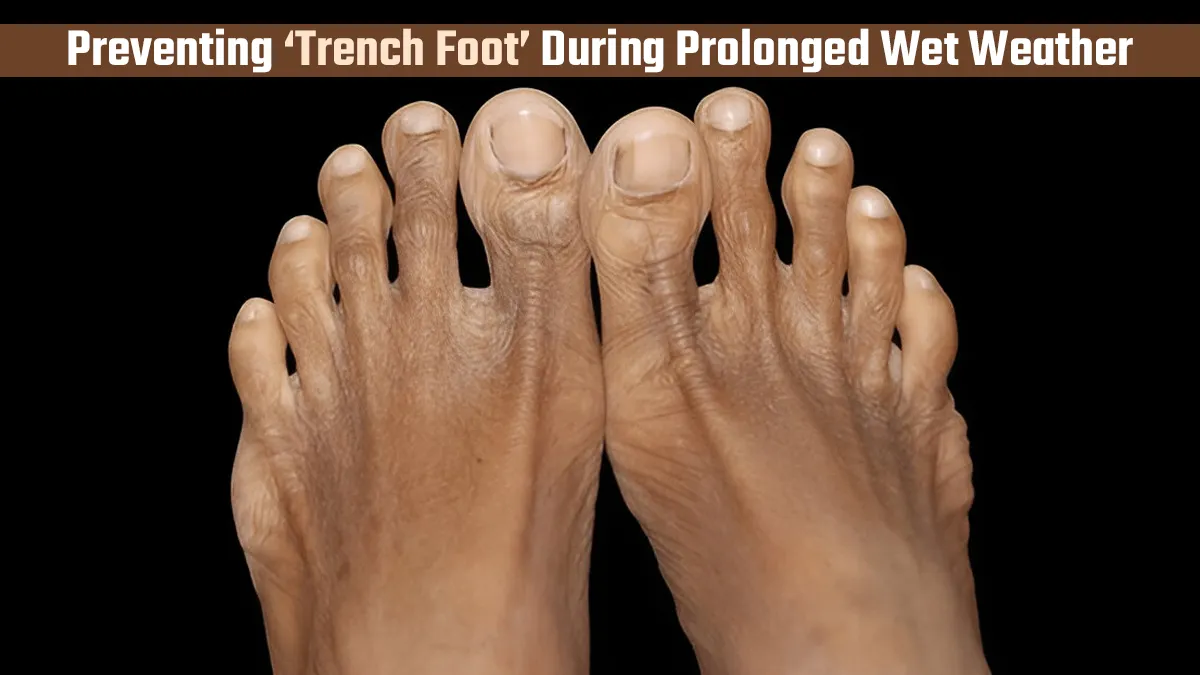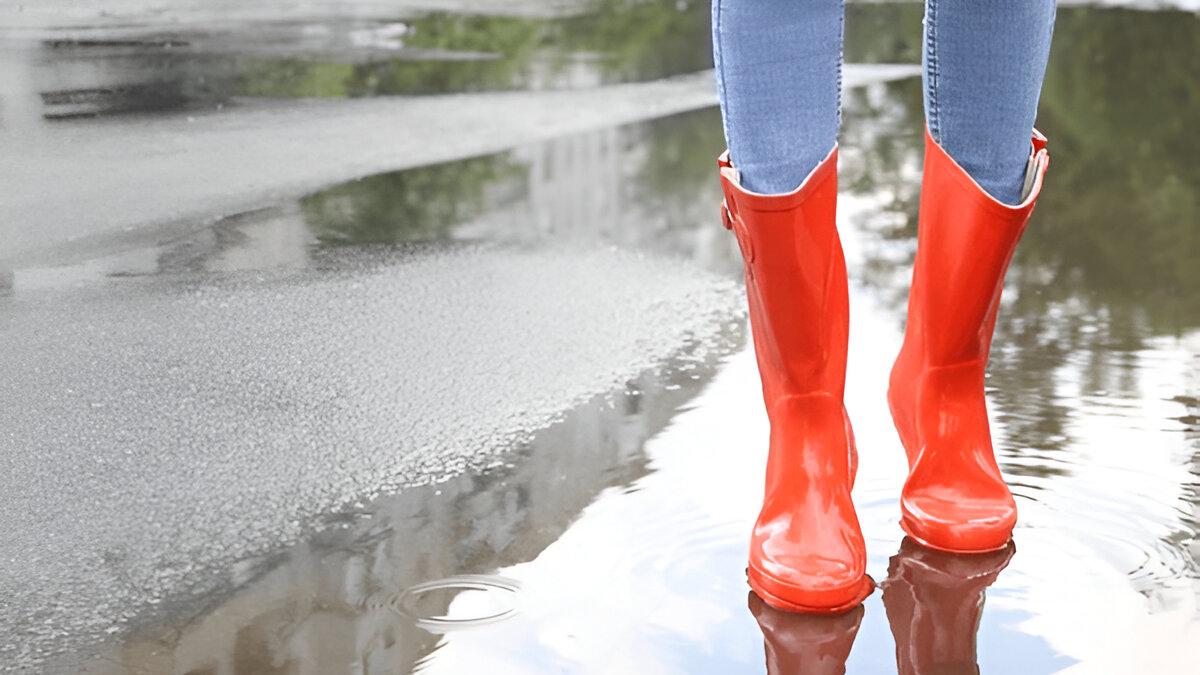
When rain seems never-ending, waterlogged streets and damp shoes become an everyday inconvenience. But staying in wet footwear for too long can lead to trench foot, a painful condition first seen in World War I soldiers and still affecting people today. It happens when feet are wet, cold, and squeezed for hours, cutting off circulation and damaging the skin and tissue. Unlike Athlete's foot, it’s not caused by fungus, just prolonged dampness and chill.
Table of Content:-
What Is Trench Foot?

According to a 2023 study, Trench foot is one of three immersion foot subclasses and a Non-Freezing Cold Injury (NFCI). It is sometimes distinguished on the basis of the exposure temperature and results from prolonged cold but not freezing, wet, and sometimes unhygienic conditions. The disease will eventually lead to skin and tissue breakdown, which predisposes to infection and elevates the morbidity and mortality.
Symptoms usually start with tingling, numbness, or heaviness in the feet. When the condition is more advanced, the skin can become red or blue, swollen, and blistered. Trench foot, if not treated, will result in infection, nerve injury, or permanent circulation difficulties.
Also Read: Is Rain Making Your Joints Ache? Doctor-Backed Remedies for Relief
Who Is at Risk?
While the name comes from wartime trenches, trench foot can affect anyone exposed to prolonged wet conditions—construction workers, farmers, trekkers, hikers, outdoor athletes, and people living in flood-prone areas. Even during daily life, wearing damp shoes for hours, especially in cool weather, can raise the risk.
Why Prolonged Wet Weather Makes It Worse
Continuous rain means socks, shoes, and even indoor flooring can remain wet for longer. When moisture is trapped against the skin, heat loss increases, blood vessels become narrower, and the tissue does not receive enough oxygen and nutrients. The longer this happens, the more harm takes place, sometimes in less than 12 hours.
How to Prevent Trench Foot
The good news is that trench foot is entirely preventable with simple precautions:
1. Keep Feet Dry and Warm

- Make sure to choose waterproof footwear if you’ll be outside for long periods.
- Wear moisture-wicking socks made from wool or synthetic fibres rather than cotton, which stays wet longer.
- If possible, change socks every few hours when they become damp.
2. Give Your Feet a Breather
- Remove shoes and socks during breaks to allow your feet to dry and warm naturally.
- Gently massage feet to stimulate circulation.
- Steer clear of tightly laced shoes for extended periods, as limited blood flow can exacerbate damage.
3. Rotate Footwear
- Don’t wear the same wet shoes day after day.
- Use newspaper, silica gel, or boot dryers to speed up drying overnight.
4. Stay Active
Motion stimulates circulation, even in wet shoes. According to an old study, gentle movement, such as toe wiggling or short walks, promotes circulation. Soldiers were also instructed to move regularly to reduce the risk.
5. Avoid Direct Heat on Cold Feet
Never put cold, numb feet directly on heaters or hot water. Sudden rewarming can ruin tissue. Instead, dry them off gradually with dry socks and blankets.
Also Read: Rainy Season Nail Problems: Why Toenails Turn Yellow Or Soft And What To Do
When to Seek Medical Help
If your feet are persistently numb, swollen, blistered, or discoloured, see a healthcare provider promptly. Early treatment may involve gently drying the feet, elevating them, and using mild warmth to restore circulation. Antibiotics might be needed if an infection sets in.
Bottomline
Trench foot is not merely a historical footnote; it's a contemporary hazard in rainy, cold weather. By maintaining dry, warm, and well-oxygenated feet, you can pursue outdoor activities or weather wet weather without compromising the health of your feet. Prevention is much simpler than treatment, so incorporate foot care into your rainy-day routine.
[Disclaimer: This article contains information for informational purposes only. Hence, we advise you to consult your professional if you are dealing with any health issue to avoid complications.]
Also watch this video
How we keep this article up to date:
We work with experts and keep a close eye on the latest in health and wellness. Whenever there is a new research or helpful information, we update our articles with accurate and useful advice.
Current Version
